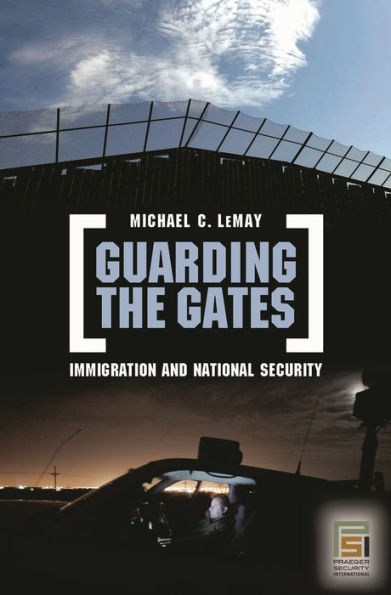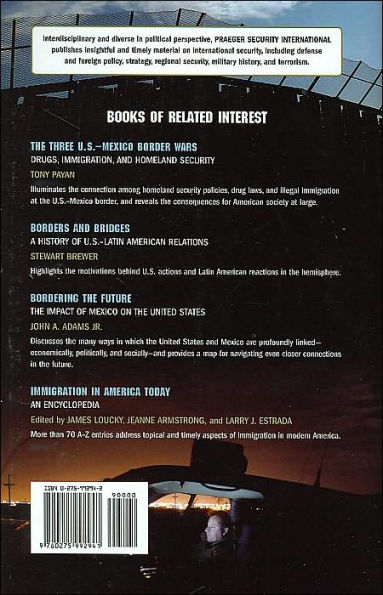Guarding the Gates: Immigration and National Security
National security has always been an integral consideration in immigration policy, never more so than in the aftermath of September 11, 2001. This is the first history of American immigration policy written in the post-9/11 environment to focus specifically on the role of national security considerations in determining that policy. As LeMay makes clear, this is not the first time America has worried about letting foreigners through our gates.
By the time readers reach the final chapter, in which current policies regarding the interplay between immigration and national security are discussed, they have the historical perspective necessary to assess the pros and cons of what is happening today. They are able to more clearly answer questions such as: Does putting the Immigration and Naturalization Service under the Department of Homeland Security make the country more secure? Do vigilantes improve border security? How are we handling the balance between national security and civil liberties compared to the ways in which we handled it during World Wars I and II and the Cold War? LeMay does not advocate a specific policy; rather, he gives citizens and students the tools to make up their own minds about this enduringly controversial issue.
"1100268556"
By the time readers reach the final chapter, in which current policies regarding the interplay between immigration and national security are discussed, they have the historical perspective necessary to assess the pros and cons of what is happening today. They are able to more clearly answer questions such as: Does putting the Immigration and Naturalization Service under the Department of Homeland Security make the country more secure? Do vigilantes improve border security? How are we handling the balance between national security and civil liberties compared to the ways in which we handled it during World Wars I and II and the Cold War? LeMay does not advocate a specific policy; rather, he gives citizens and students the tools to make up their own minds about this enduringly controversial issue.
Guarding the Gates: Immigration and National Security
National security has always been an integral consideration in immigration policy, never more so than in the aftermath of September 11, 2001. This is the first history of American immigration policy written in the post-9/11 environment to focus specifically on the role of national security considerations in determining that policy. As LeMay makes clear, this is not the first time America has worried about letting foreigners through our gates.
By the time readers reach the final chapter, in which current policies regarding the interplay between immigration and national security are discussed, they have the historical perspective necessary to assess the pros and cons of what is happening today. They are able to more clearly answer questions such as: Does putting the Immigration and Naturalization Service under the Department of Homeland Security make the country more secure? Do vigilantes improve border security? How are we handling the balance between national security and civil liberties compared to the ways in which we handled it during World Wars I and II and the Cold War? LeMay does not advocate a specific policy; rather, he gives citizens and students the tools to make up their own minds about this enduringly controversial issue.
By the time readers reach the final chapter, in which current policies regarding the interplay between immigration and national security are discussed, they have the historical perspective necessary to assess the pros and cons of what is happening today. They are able to more clearly answer questions such as: Does putting the Immigration and Naturalization Service under the Department of Homeland Security make the country more secure? Do vigilantes improve border security? How are we handling the balance between national security and civil liberties compared to the ways in which we handled it during World Wars I and II and the Cold War? LeMay does not advocate a specific policy; rather, he gives citizens and students the tools to make up their own minds about this enduringly controversial issue.
61.0
In Stock
5
1

Guarding the Gates: Immigration and National Security
340
Guarding the Gates: Immigration and National Security
340
61.0
In Stock

Product Details
| ISBN-13: | 9780275992941 |
|---|---|
| Publisher: | Bloomsbury Academic |
| Publication date: | 09/30/2006 |
| Series: | Praeger Security International |
| Pages: | 340 |
| Product dimensions: | 6.14(w) x 9.21(h) x 0.81(d) |
About the Author
From the B&N Reads Blog



